The Architecture of Value Engineering
May 27, 2008
Article written by Aaron Betsky
The new Student Center at the Illinois Institute of Technology marks the transition from the era of “God is in the detail” to that of “No money, no details”. From Ludwig Mies van der Rohe’s fetishism about the appearance of construction and its absolute relationship to the modulation of spatial relations we have arrived at Rem Koolhaas’ desire to make buildings that are appropriate and critical condensers of existing technologies and social relations into spaces so complex that they cannot be defined in static terms and planes that graphically represent those enabling conditions.
To go from structure to image, from solution to open ended situation, and from the beauty and truth of architecture to its tortured insertion into our culture, all you have to do is to take only a few steps from the almost ruinous chapel at the IIT campus with its iconic corners and its perfect, static proportions to enter into the crazed crossing point of paths and activities that makes of the new student center. From the iconic corner column welded together from steel sections to create the perfect resolution, at least visually, of constructed forces you move to expanded metal mesh held suspended between planes of glass, a fragment of construction held up as beautiful web. One way to explain this devolution –or, perhaps more appropriate, involution– is to blame it on the changed situation in which the architect works today.
As Michael Rock, the graphic designer with whom Koolhaas collaborated on this project, explains: “There was also a clear relationship between the graphic design and the “value engineering” of the building. As “real” materials were stripped from the building, they were replaced by their graphic simulation” (1)
“Value engineering” is the name for the American rage for subjecting all buildings to a rigorous review in which everything that is considered “extraneous” is eliminated by cost estimators and budget experts. Value engineering now determines more and more of the standard American building’s appearance, but is itself no more than the most visible part of a movement to reduce the amount of investment that has to be made in the physical building to an absolute minimum. As little capital as possible is applied, and that money is moved out as soon as possible. This also means that materials, details and even assemblies and proportions need to be as standard as possible, so that everything from design to construction to maintenance can be minimized. “Design” then consists of choosing among a limited scale of options, including colors and textures, which are even further limited by the demands of life-safety regulations for everything from the toxicity of materials to their ability to confuse users in such a manner that somebody might trip or otherwise injure themselves. It is this situation that has led to Koolhaas to proclaim that he
will only provide those details that are absolutely necessary.
One can also put this movement in a cultural context, in which the necessity for meaning is reduced to that of image, or even, in this era in which photography and video art dominate more and more of the art world, of an ephemeral projection. It is this role that Michael Rock’s firm 2x42 played in the Student Center, producing iconic images to cover the Center’s otherwise thin walls. Design becomes more and more about styling and then selling that particular image, as is true in everything from computers to buildings. What is particularly remarkable is that the images of work or functioning become the meaning that lays on top of efficiently engineered, mass produced and anonymous bodies. As our society makes production more and more invisible, as it occurs in far-off places, and as the actual working of things becomes more and more electronic and miniaturized, and thus invisible, what dominates more and more is the mythology of work, rather than its actuality.
This is true not just in architecture. Blue jeans, once work clothes, become emblems of sporty leisure; cooking apparatuses become fetish objects for the ritual, not the necessity, of cooking, pick up trucks become embodiments of suburban commuting, and, in architecture, the heroics of structures become the what is left of civic symbols in convention centers, sporting arenas. How appropriate that the newest structure for an engineering school, which was founded at the end of the 19th century to give access into the realms of industrial production to poor immigrants, is a place for attracting students and letting them play, and that it be a building that most perfecting represents in all its value engineered beauty the evolution of production into consumption.
It does so, moreover, in a complex that itself represents the last great attempt to make the culture of production into an organized, visible exposition of itself. Mies van der Rohe’s 24’ grids established a system in which a steel skeleton with infill panels of glass and brick expressed in an abstract composition but very real materials the melding of the two great
places of work, the factory and the office building, into a school that taught how that work worked. Its ultimate failure (by the time IIT started planning the Student Center, it had lost half of its students) was also the failure of our culture’s faith in the ability of that mode of production to make our world in a manner in which we wanted it. Mies van der Rohe might have wanted to live in an empty grid, but few others did.
The Student Center’s first great gesture then is to excise both the original grid and the last emblem of an industrial culture on the site, the overhead train, from the scene. Though holding onto the scale and some of the generous, square proportions of the original Mies van der Rohe buildings, the Student Center flattens the grid into thin planes, folds the front facade away from the orthogonal, and refuses symmetry. Above, a corrugated metal tube contains and hides the train, relieving the severe sound problems, although many other, less visually dramatic and cheaper solutions were also possible.
The tube crushes the flattened Miesian grid, and abstracts the articulated steel girders that supported its trestle into black-painted metal posts and concrete pillars. The act of building, whether of infrastructure or of the buildings themselves, disappear.
Then there are the materials themselves.
The building’s outside is largely clad in a very thin, off-the-shelf window system of aluminium and clear glass, though a considerable amount of that glass is orange (3). Acting as a sign of something different, something that is in fact an abstract plane rather than the result of construction, as the clear glass and brick panels in the original buildings are, that stretch of color creates an instant image distinguishing the Center from its context. The rest of the facade is covered in an even cheaper material, black roofing paper (4), that has been turned into a faint approximation of Cor-ten steel by painting it with a red drip pattern. If in the Mies van der Rohe buildings the planes are neutral, here they are the carriers of image, and it is one directly associated either with construction and aging (the roofing paper), or with the most minimal shed construction.
The tube itself refers to, but only in an imagistic (5) sense, to the corrugated metal skins of the standard Chicago elevated trains (the corrugations even show up for a moment inside, as a ceiling) (6), even though the transportation system’s newer trains are eschewing this cladding.
The most figurative image is that of Mies van der Rohe himself (7), built out of collection of icons Michael Rock designed for the occasion, that hovers, ghost-like, on the building’s facade. Not the maker, but his specter floats on the thin skin, along with that of several of the building’s donors (8). The architect and all those who made the building possible are no
longer active, but composite icons. The icons themselves are cartoons (9) of students doing what they do, not always what they are meant to do, although some of the most salubrious were edited out by the client. Mies van der Rohe breaks down into the consuming crowd, so that even the great maker disappears into the ever changing patterns of use.
And then, once you enter, the work reappears: the rear of the Commons building (10), incorporated into the new complex, as an artifact from another era, seen across a captured courtyard. Despite vehement protests by some local architects, Koolhaas completely incorporated the building, making it an integral part of the new Center. The Commons
building itself has been restored, but also emptied out, turned into a student cafeteria run by one of those international conglomerates. It is an homage to Mies, a memory that has been voided and assimilated into a new reality.
That reality is one of surfaces defining paths.
The Center is a loose box, filled not with open, perfectionly proportioned space, but with a hodgepodge collection of different functions arranged by Koolhaas and his office after an exhaustive study of circulation and use patterns in this part of the campus. Its main elements are diagonal paths defined by slick aluminum rectangles as flooring material (11). These are related to the “trajectory” Koolhaas designed for the recently completed Dutch embassy in Berlin. They are fetishization of the path into the most precious container, as if the car or the train has been voided and had become just a line.
Architecture is here materialized not as a container for space, but as the articulation of movement through that space, with the container disappearing behind wallpaper images made of everything, from lenticular wave patterns to surveillance photographs (12) taken on the campus –and these images themselves are meant to change, so that the container itself moves in (slow) motion.
In some cases, these lines of movement take on a different quality and even tend to spatiality. This is most evidently the case in the “Broadband,” a cut in the floor that replaces the “Broadway” or central axis that in a traditional building would have led to the most important programmatic element, with a redorange epoxy ramp and table at which students can sit to access the internet (13). Here, as the only place in the building, work occurs, but it is of the most disassociated matter, in bits and bytes. The path becomes a way not just of moving places physically, but of doing so virtually as well. What distinguishes the left-over spaces around the paths (for that is what they are) most is that they are pools, lacunae and incomplete voids. Rather than defined spaces, they are triangular and wedge-shaped areas whose floors are covered in different colors of epoxy. Here students can sit on desks, can play games (14), or find other ways to engage in a temporary activity marked by a material that is itself uncertain in its constitution. The tactily moves from the slick, motion-inducing, to that which slightly gives, inviting a moment of pause and use, just as the colors take on a greater amount of specificity, though without referring directly to one use or the other.
What remains are the actual boxes that float within this loose volume and the structural elements one encounters through the spaces. The former are, in many ways, the most boring and predictable parts of the program. They include an auditorium (15), a multifunctional space, meeting rooms, student offices, stores and administrative areas. Their wallpaper covering makes them into anonymous parts of a larger composition and when, in the administrative zones, a certain gravitas was apparently necessary, it takes the form of a faux-zebra wood wallpaper that oozes false authority. In the public meeting rooms, Petra Blaise’s curtains (16) provide a sense of frivolity to the ponderous act of meeting, while the lenticular wallpaper turns the orange glass skin (17) into an even thinner and more uncertain applique that refuses to establish a neutral background to the work of meeting, setting agendas, action points and deliverables.
The actual structure (18) floats through this as a dance of allusive markers. The Miesian I-beam turned, somewhat illogically, into a vertical post, is here reduced to a black post that stands in contrast to concrete pillars, both straight and unpainted, and angular and black, supporting the train tracks and tube above. Reality and memory intrude in a material
way, but only as a rhythm running through the lines of movement and planes of allusion. Structure here is like a baseline to the multi-melodic composition of images.
These two come together in the ceilings, where Koolhaas has left the drywall unfinished (19). The panels have been spackled and the seams and screw holes painted, creating a repetitive and perhaps overly neat pattern. Apparently, the original plan was to cover the ceiling with wood, but fire codes would have necessitated hanging this finish below a sheetrock layer, and Koolhaas found this a ridiculous waste of both money and building logic. So value engineering and the codes that define so much of American buildings’ materiality here are directly visible in the organizing rhythm that spreads over the criss-crossing lines of movement. The act of construction is present as well, but not its final result, only a representation of some state of finish. Thus what is remarkably absent in the Student Center is any sense of the real. The only moments of material fetishism that are not either a memory (the Commons Building) or of an outside force (the train above) are the planes Panelite (20), a plastic honeycomb material Koolhaas has used in several recent projects and that here shows up in desks (21) and chairs. The same company that came up with this new material, formed by young architectural designers from New York and Los Angeles, also produced the expanded metal mesh panel screen sandwiched in glass. These panels enclose the most spatially exciting rooms in the building, namely the bathrooms (22). As always with Koolhaas, if you want to indulge your material fantasy, you should be willing to work (at the desks) or to confront your own materiality.
“This is a building for the MTV Generation (23) that absorbs information much faster than we can,” says local critic and curator Ned Cramer of the building. It is, in fact, all about movement and information, and thus by its very necessity not about construction, materials and place. Koolhaas is preparing a new kind of architecture for a world in which the substantial and the historic no longer guarantees authenticity or meaning.
TheStudent Center is a place of movement and transfer, much like an airport or the libraries and office buildings he is now designing. It is produced not by a single maker, but by a team that speaks not the language of building, but of value engineering, research and graphic design. It is a place for leisure and the assimilation of information, not work. “I do not respect Mies,” Koolhaas famously responded to critics who wanted him to leave the Commons alone; “I love him (24).” In consummating his desire for the architecture of Mies van der Rohe, he has achieved a Liebestod (25) from which a new kind of post-material, post-place, post-structural, post-authorial and post-authoritarian architecture has emerged. Its God is not in the details, but in the surface and thus, by removing almost all, less is here truly and in a more consumable manner more.
Aaron Betsky is architect, historian and director of the Netherlands Architecture
Institute (NAI) since 2001


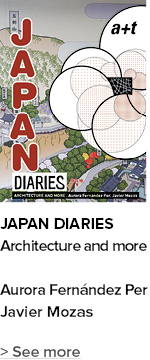




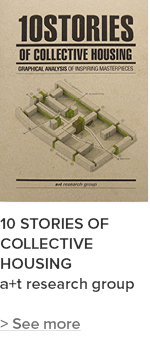

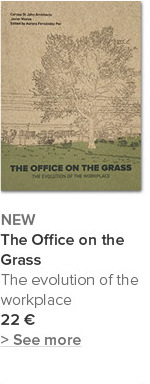
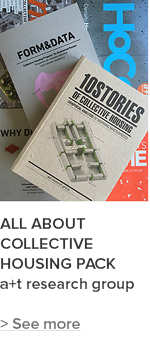
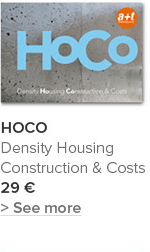

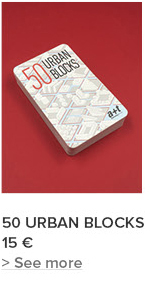
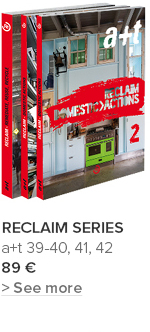

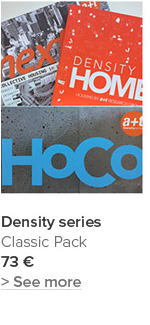





 I've read and agree to
I've read and agree to 


